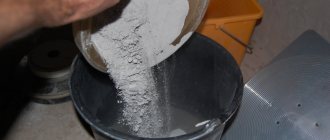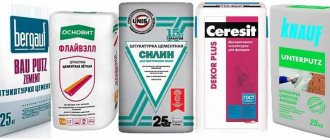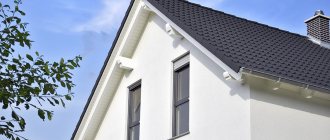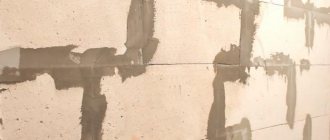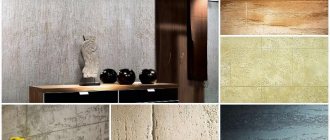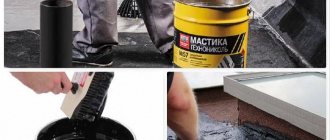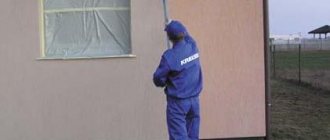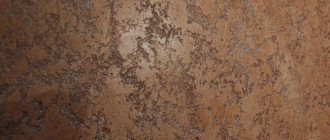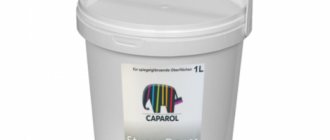Building materials that include liquid glass have been used in construction for a long time. Mixtures have been developed for concrete work, waterproofing, as well as for other purposes. One type of liquid glass materials is silicate plaster. Perhaps, seeing buckets of ready-made mixtures or packages of powder on the counter with the word “silicate” written on them, someone will remember the silicate glue they used at school. And someone will immediately think about liquid glass (LC).
What it is
Glass, which is called liquid glass, is a material known since the beginning of the 19th century. It was first obtained by the German chemist Fuchs when he tried to influence silicic acid with alkalis. This material is called glass because of its external similarity. When hardened, the mass becomes transparent and glassy. The main components of liquid silicates are water-soluble potassium and sodium silicates. Modern liquid glass is produced using various technologies.
Therefore, there are two main groups:
- Sodium is a highly adhesive substance that adheres to minerals, is resistant to temperature changes, and is not afraid of exposure to atmospheric factors.
- Potassium - has similar properties, except that it does not shine.
The use of liquid glass as a base for plaster mortars gave rise to a new type of plasters - silicate ones.
General information
Silicate facade plaster is produced in the form of a ready-made solution that does not require preparation at the work site. It is an environmentally friendly coating and has a wide range of colors.
Despite the fact that the material is considered facade, it can also be used for interior decoration. For example, such plaster can decorate the wall of a kitchen or balcony.
Silicate plaster mass
Compound
This material is based on “liquid” glass, i.e. an aqueous solution of sodium and potassium silicates obtained by steaming glass in an autoclave. In addition, the mixture contains mineral fillers, various additives, pigments and water.
Facade covered with silicate plaster
Types of silicate plaster
Plaster compositions are distinguished by their area of application. So, for finishing the walls of basements, damp rooms, insulated balconies and kitchens, silicate plaster for interior work is quite suitable, which protects the walls from water penetration.
Plaster compositions with liquid glass are more popular as exterior finishing of facades.
Quickly hardening, silicate solutions create a durable cover that is resistant to aggressive environments and can be easily cleaned during rains.
In addition to simple compositions (with one binder), mixtures with a complex base are produced, for example silicate-silicone.
According to their intended purpose, they are used to create coatings for finishing (tile cladding, painting) and decorative ones, which differ in the final effects:
- bark beetle;
- fur coat;
- pebble;
- lamb
Manufacturers
There are a large number of brands of goods from foreign and domestic manufacturers on the market. In order not to bother yourself with studying the features of each finishing material, it is better to trust the opinion of professional builders who have tested the effectiveness of certain silicate mixtures from their own experience. Finishing specialists give preference to the following manufacturers:
- Baumit - silicate plaster suitable for interior and exterior work. The grain size ranges from 1.5 to 3 mm, so using the ready-made solution you can create a surface of different textures.
- Kerakoll – contains filler with a fraction size of 2.5 mm. The material is used for finishing wet rooms, as well as for facade work.
- OSNOVIT EXTERWELL is a silicate plaster, the base of which differs in the size of the filler. Sold in ready-to-use form. It is used for both external and internal work.
If you purchase material from the listed manufacturers, then if properly prepared and applied, the decorative surface will retain its aesthetic and mechanical properties for at least 20 years. The job of using this type of finishing plaster can easily be done independently, which will save money.
Features of silicate plaster
The chemical composition of the mixture before drying is characterized by increased alkalinity, so it is necessary to work with gloves, protecting your eyes with goggles. Work clothes cannot be washed after working with silicate plasters. When working indoors, ventilation is required during application and drying.
Advantages
Silicate plaster has a number of advantages that outweigh the disadvantages.
List of advantages:
- good heat insulators;
- high vapor permeability;
- no shrinkage when drying;
- form high-strength coatings;
- UV resistance;
- resistance to aggressive environments;
- withstand temperature fluctuations;
- not “tasty” to microorganisms and microflora;
- fire resistance;
- antistatic;
- easy cleaning (dust and dirt are easily washed off by rain or watering with a hose);
- excellent protective coating for porous substrates, including mineral wool slabs, polystyrene foam insulation, cellular and gas silicate concrete;
- durability;
- strong adhesion to concrete, plasterboard, chipboard.
Flaws
The disadvantages are:
- demanding on the composition of the primer and paint coating (the materials must also have a silicate base);
- the need to perform work in one pass;
- there is a possibility of small cracks appearing;
- façade silicate finishing darkens when wet during rain (if it dries unevenly, it temporarily becomes spotted);
- work clothes have to be thrown away after finishing work is completed;
- high price;
- poor color range of ready-made compositions.
Silicate-silicone plaster
Separately, it should be said about such a type of silicate finishing coating as decorative silicate-silicone plaster.
This material contains:
- Liquid potassium glass;
- Aqueous dispersion of acrylic resin;
- Silicone resin emulsion;
- Hydrophobizing agent;
- Mineral fillers;
- Modifying additives and pigments.
Silicate-silicone mass
Thanks to all these qualities, this coating has even better performance characteristics than the plaster discussed above.
In addition to all the listed properties, this composition is also characterized by:
- Excellent adhesion;
- Elasticity;
- Strength;
- Color fastness;
- Resistant to dirt and weathering.
Silicate silicone decorative plaster can also be used for both external and internal use.
Preparing walls for decorative plastering
On what walls can it be used?
Silicate plasters adhere well to concrete and sand-lime bases.
They are used for plastering walls:
- from gas-, foam concrete;
- gas silicate blocks;
- shell rock blocks;
- on chipboard;
- covered with gypsum/cement plasters;
- on drywall;
- insulated with polystyrene foam or mineral wool boards.
Disadvantages of materials of this type
Probably not a single type of design can do without at least a small fly in the ointment. Silicate-based plaster mixtures also have similar “weak points”. We can’t call them too critical, but it’s still worth knowing about some of the negative features of the selected composition:
- The mass dries very quickly after opening the container, as well as during the application process. Therefore, you will have to work at a fast pace, which a beginner cannot always do.
- One continuous surface should be treated in one step - if you divide the application process into stages, then the joints of sections made at different times will be very noticeable and even the color may not be uniform.
- Before applying the composition, it is necessary to treat the walls with a specialized primer, which can be expensive and will increase the design estimate. At the same time, it is advisable to choose soils recommended by the manufacturer of the base mixture.
- A small number of ready-made shades of mixtures.
The last point is easily mitigated by purchasing white compounds - after application they can simply be painted. You can also tint the entire solution at once if you need to treat not particularly large areas of the surface. When carrying out repairs over a large area, when several buckets of the mixture are needed, it will be difficult to tint them in one shade with the required accuracy.
Surface preparation
To complete the finishing with a thin layer of silicate plaster, the protrusions on the base must be smaller than the grain size of the mixture. If the condition is not met, the protrusions are cut off, the surface is leveled, and cleaned of oil stains, soot, rust, and efflorescence. Old wallpaper and paint coatings are removed. Metal parts left in the wall are insulated. Surfaces that have cracks or potholes are repaired.
After removing the dust, the base is covered with two layers of silicate primer, with the obligatory drying of each.
How to prepare the surface for application
Before applying the decorative solution, the wall is cleaned of dirt and old coating. Use scrapers, spatulas, metal brushes, and a drill with a special attachment (chisel).
The cleaned wall is coated with a primer. This is a prerequisite when working with plaster. Typically, manufacturers of facade mixtures also offer primers suitable for this type of coating.
If the solution will be applied to a wooden surface or insulation (mineral wool), it is necessary to fill the wall with shingles or reinforcing mesh. This will enhance the adhesion of the mortar to the wall and increase the strength of the coating. For the same purpose, notches are applied to a smooth concrete surface using a drill and a cutting wheel.
If the surface has unevenness (cracks, deep potholes), they are pre-filled with a sand-cement mixture to reduce the consumption of decorative plaster.
Technology of applying silicate plaster
To perform silicate plaster coating on facades, choose windless, dry weather. The treated surface is protected from direct sunlight. If the wall area is large, two people work together to avoid the formation of joints. It is necessary to prepare the required amount of plaster with a small margin to avoid interruptions in the coating on the entire wall. The mixture is prepared for work by stirring with a mixer to create uniformity. If necessary, perform tinting.
Since it is difficult to tint different batches the same way, they often resort to painting an already laid, dry coating.
The dry mixture is diluted with the volume of cold water specified by the manufacturer. When using CC, try to measure the amount of liquid accurately and dilute subsequent batches with the same volume. Then the joints between different batches will be less than replacement.
Do not mix too intensely, since the air bubbles formed in the viscous mixture will not be able to escape from it.
If it is impossible to avoid a break in work, cover the edge of the treated area with a strip of masking tape. Plaster with a small layer overlay. After the solution begins to set, the strip is removed. And before resuming work, a new strip of tape is glued to the edge of the dried solution. The next section is plastered flush with the previous one.
The application technology is similar to the methods of applying plasters to other substrates. Finishing procedure:
- Prepare the base.
- Mix the solution from the dry mixture.
- The wall is moistened.
- Apply a layer of mortar to the wall.
- Create the selected texture until the layer has set.
- The dried layer is rubbed with a grater, removing excess protrusions and sharp peaks.
- Dyeing is done.
The finished coating is painted with silicate paints. The surface will look more prominent if you first paint it with a brush or long-haired roller, and after drying, apply the paint with a semi-rigid foam roller, without filling the recesses on the surface of the layer with it.
Mechanized application
Using devices and devices for mechanical application, silicate plaster for the facade is sprayed onto the wall from a distance of 20 - 30 centimeters. Immediately after this, the layer is leveled with a grater and the manual application of the pattern begins.
Specifications
The finished silicate mixture for plastering walls is diluted with water. The amount of liquid should be selected based on obtaining a certain consistency of the solution. Other important characteristics of the material also need to be known in order to avoid serious mistakes during preparation and use.
Main parameters of silicate plasters:
- Operating temperature of the finished coating: from minus 50 to plus 70 degrees.
- Adhesion: not less than 0.6 MPa.
- Durability of the applied layer: at least 20 years.
- Density: 1800 kg/m3.
- Number of freezing/defrosting cycles: at least 100.
- Temperature at which the material is recommended to be applied to the wall: from 5 to 30 degrees above zero.
- Shelf life of the dry mixture: no more than 1.5 years.
- Consumption: 2.1 – 4 kg/m2.
The prepared solution must be used within 1 - 2 hours.
Recommendations for application
General recommendations for the use of silicate plaster are in many ways similar to the classic ones:
- The composition is pre-thrown onto the wall to ensure maximum adhesion to the surface.
- The plaster is leveled using a regular trowel.
- The specific thickness of the plaster layer depends on the characteristics of the filler. The thicker the resulting layer, the lower its decorative features.
- The entire surface must be finished at one time. If one master cannot carry out all the work, additional labor should be hired. It is better to carry out the entire volume of work without interruptions, so that the edge of the connection between the layers remains invisible.
- It is recommended not to carry out work in extremely hot weather or during rain. If necessary, the finished coating can be protected with an awning until the plaster is completely dry.
If the surface finishing is not completed, but there is a need to interrupt the work, you need to apply masking tape to the border, and then “pull” a layer of the composition over it. When resuming work, simply remove the protective tape and continue applying the plaster. If the joint between the layers still remains noticeable, it can be further worked on with a grater or roller.
If the plaster will be covered with paint, then it is better to give preference to silicate varieties. In terms of composition and texture, these materials combine best. The best decorative effect is achieved by painting with two colors. First, the base is applied to the layer of plaster, and then the main color. Don't worry that the paint may not penetrate to the bottom of the grooves and depressions, this will make the design even more attractive.
During work, you should not use old containers and tools with corrosion elements. It is better to choose graters and rollers from plastic.
